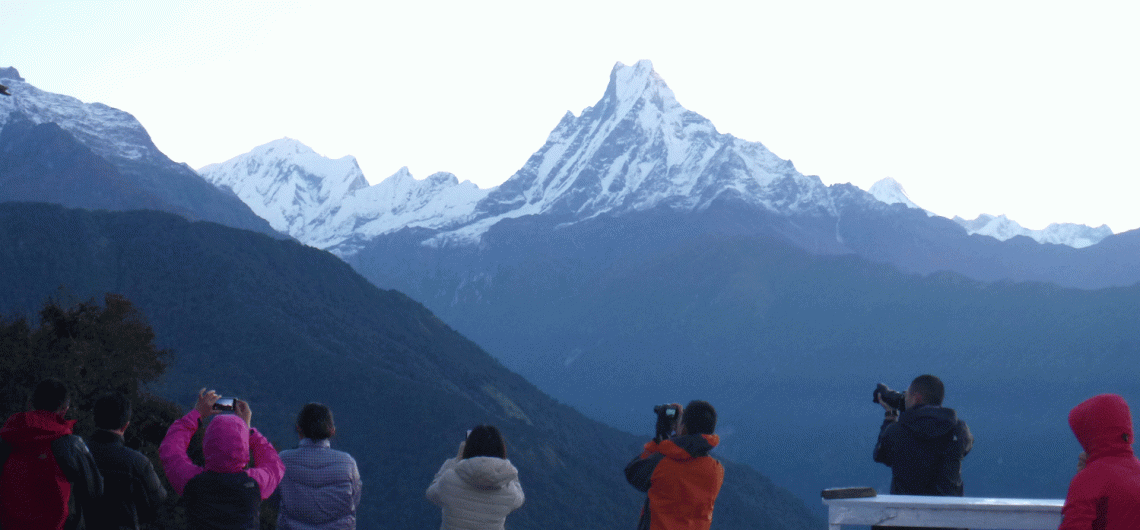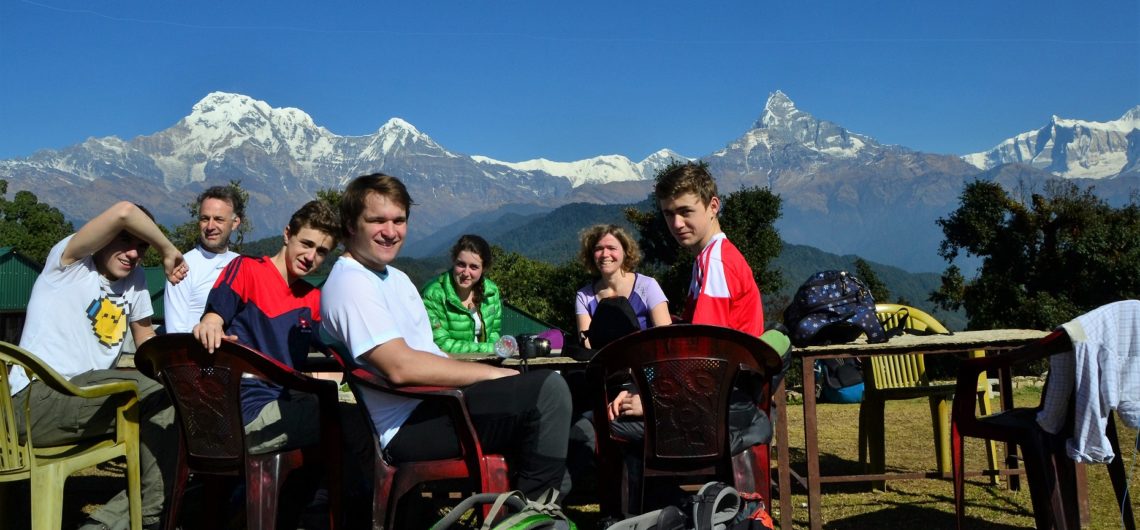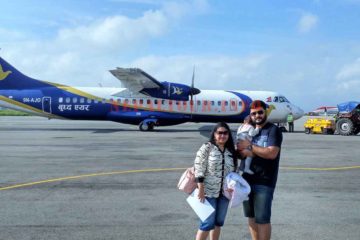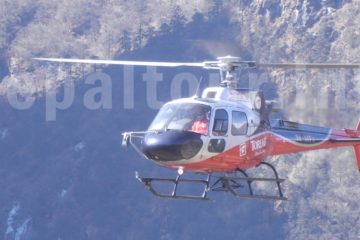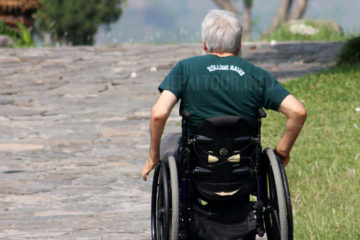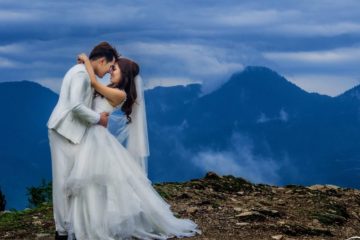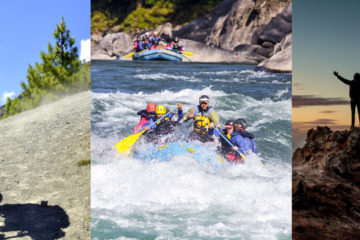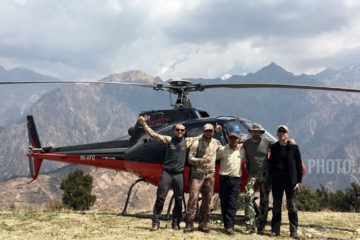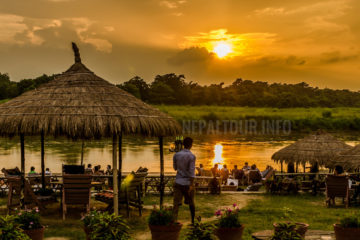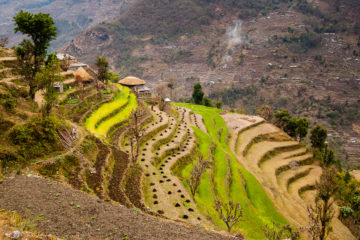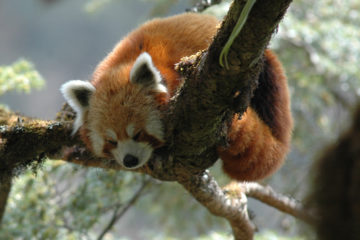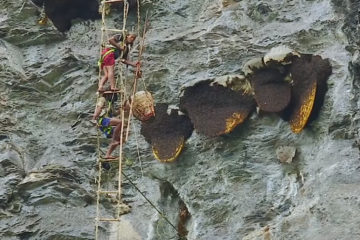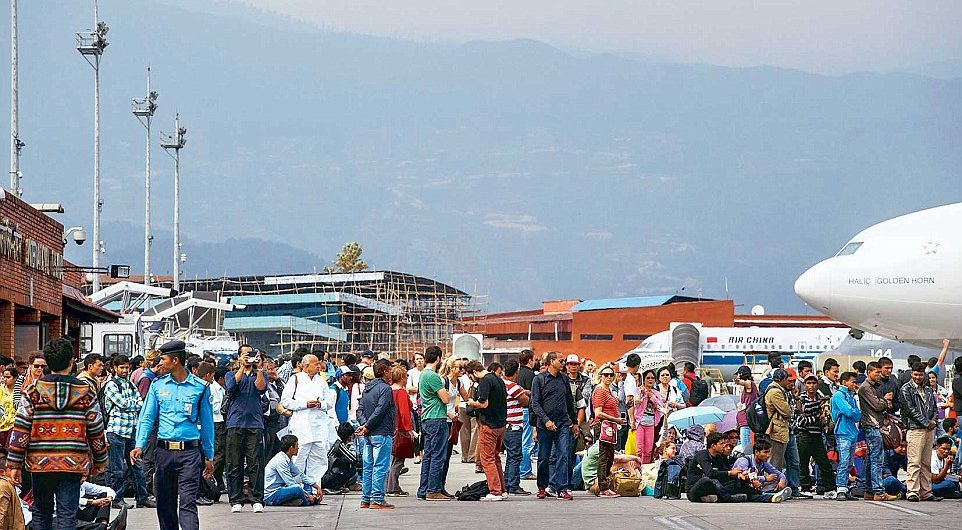The Ghorepani Poon Hill Trek is a hiking tour for 4-5 days in the Annapurna Mountain range located in Nepal. It actually needs a moderate level of fitness to complete this trek and the maximum elevation of this trek is 3,210 meters. Part of this trek is a natural trail that heads through the rhododendron forests with some rainforest-like flora all around. Other parts of this trek include stone staircases, which head from one village to another and therefore this route is used by both visitors and locals.
The Poon Hill Trek is really popular as the costs are low, packing is easy and permits are also really easy to obtain. These are also the reasons why this mountain trail remains congested during the peak season.
Best things about the Ghorepani Poon Hill Trek
The trek is pleasant and it also follows a part of the earlier Trans-Himalayan Salt Trade Route. The views during the trek change from terraced rice fields, farms to gorges, waterfalls, and forests. There are also some amazing views of mountains along the way through clouds. The entire trek is hardly on the flat ground.
Sunrise from the Poon Hill:
The main highlight of this trek is the trip to Poon Hills. There at the elevation of 10,230 feet, one can get to see 360-degree views of the surrounding mountains. Besides, one can get to see the peaks like Annapurna, Tukuche, Dhaulagiri, Hiunchuli, Nilgiri, Gangapurna, Annapurna South and Macchapucchre or the Fish Tail from here. The views are amazing to justify the strenuous climb.
Travel itinerary:
- Drive to Nayapul and hike to Tikhedhunga: The Ghorepani trek starts with a few minutes’ drive to Nayapul through a beautiful landscape. This route mainly follows a lush green jungle and terraced grasslands along the rushing river. During the trek, the tourists have to walk through the Birethanti village (1,015m), therefore the north side of the Bhurung Khola and therefore up to the side area of the valley to Hille to reach Tikhedhunga at the height of 1570mm.
- Trek to Ghorepani: This day mainly includes a sudden ascent. On this day, the tourists need to go across the Tikhedhunga Khola through a cable bridge, therefore go downward and then go across the Bhurung Khola. After that, they have to climb a steep and long chain of stone footsteps to Ulleri. On the way to Ulleri, travelers can enjoy an amazing view of the snow-white peaks of Hiunchuli, Annapurnas, and Machhapuchhare. After that, the tourists have to climb more gently to Nanghethani through the rhododendron forest. It takes another hour of time to reach Ghorepani . It is a beautiful settlement situated on the ridgeline.
- On the next day, the tourists have to hike to the Poon Hill Viewpoint. From where they can enjoy a breathtaking view of sunrise. After watching the beautiful views, tourists can follow a wonderful forest trail through the oak and rhododendron woods to Deurali. Next, they have to climb through the steep woods for around twenty minutes to arrive at Tadapani.
Best time to go for Ghorepani Poon Hill Trek:
Although trekking is possible all around the year, every season has some different advantages as well as attractions. The temperature in this hill also depends on the basis of the altitude range- lower the temperature, higher the altitude.
- December-February: These are the coldest times of the year and the temperature can often drop to -5°C at the higher altitudes. Despite being so cold, the sky remains really clear and the mountain views look the best. Because of the snowy weather, these months are not perfect for the beginner hikers, but the experienced hikers can continue.
- April-May: The trekking season mainly starts from April and the route becomes more beautiful with full blossom rhododendron of different colors like white, pink and red. Although the temperature remains cool at this time, the temperature starts rising. The sky remains really clear at these months, therefore the tourists can enjoy a great view of the mountains.
- September-October: This is the favorite time of trekking for the tourists due to the perfect climate and favorable weather condition. The sky remains really clear at these months, therefore the tourists can enjoy a great view of the mountains. These months are also the best time for the daytime trek. During this period, the weather also ranges from mild to warm.
- November: This is another popular season of trekking with a sparkling and crisp sky. The daytime temperature of this month is most stable from cool to mild conditions. But the nights remain cold. Therefore, the travelers need to be a bit careful.
How many days does it take to complete the Ghorepani Poon Hill Trek?
For the fit and young hikers, 4 days are perfect for completing the Ghorepani Poon Hill Trek. Guides often split the entire route into some manageable chunks and also explain the highlights of this trail along the way. But for the hikers, who have any physical limitations or who are not acclimated to the altitude, completing the Ghorepani Poon Hill Trek in 5 days works as a smarter bet.
Why choose a Nepal Tours website for the Ghorepani Poon Hill Trek?
It is better to choose a Nepal Tour website for the Ghorepani Poon Hill Trek as this type of company mainly offers an adventurous, successful and memorable experience to all the hikers. With the devoted and excellent management team of this company, the main aim of this company is to offer a friendly, safe and sound environment where the hikers can enjoy their experience while being completely secured.
So, by choosing the company like “Nepal Tours”, you can get the best hiking experience while getting complete information about the cultures, tradition, flora and fauna and customs of the trekking area.

